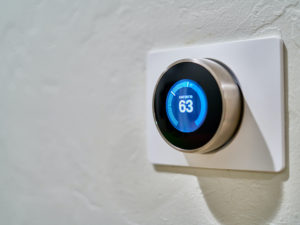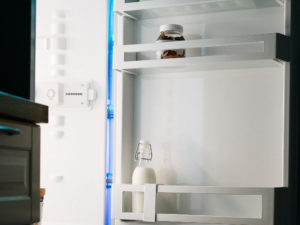Determine What Refrigerants You Use
Do you know what refrigerants you use in your home and vehicles? Do you really even know what refrigerants are? A refrigerant is a compound, typically in a fluid or gaseous state, that absorbs heat from the environment and transfers to another area as refrigeration or air conditioning. It’s found in pretty much everything that cools, and sometimes in things that heat, most commonly air conditioners, fridges, freezers, and vehicle air conditioners.
Without refrigerants, there would be no air conditioning, refrigeration, or freezing technology. The use of hydrofluorocarbons (HFCs), a refrigerant, is rapidly growing because they were heavily adopted as replacements for Ozone Depleting Substances (ODS) such as chlorofluorocarbons (CFCs) and HCFCs, whose use is being phased out under the Montreal protocol due to their ozone depleting effects. However, even though HFCs have no ozone depletion potential, HFCs are potent greenhouse gases with high global warming potential (GWP) and long lifetimes that can be hundreds to thousands of times more potent than carbon dioxide (CO2) in contributing to climate change per unit of mass.
Now, they too face international replacement by either hydrofluoroolefins (HFOs) or “natural” refrigerants under the October 2016 Kigali Amendment to the Montreal Protocol. Although the United States has yet to officially embrace the Kigali Amendment, few experts doubt the science behind the global climate change actions of about 170 other nations.
The demand for air conditioning and refrigeration, thus refrigerants, are increasing as the world warms, particularly in Duluth where residents are having to purchase air conditioning systems for the first time.
The environmental impact of refrigerants can be either direct or indirect. The direct impact is that the leakage of refrigerant gases into the atmosphere which can cause ozone depletion and contribute to global warming. The indirect impact is that refrigeration and air conditioning systems consume energy, which raise s CO2 emissions and contributes to global warming.
There are many ways to reduce your environmental impact.
REDUCE DIRECT IMPACT:
- Use a refrigerant gas with lower environmental impact: Look to use a refrigerant gas with zero ozone depletion potential (ODP) and low global warming potential (GWP).
- Lower the leak rates of your system: Refrigerants only create direct emissions when they leak to atmosphere. Ensure that your system is leak-tight, consider fitting leak-detection systems and follow a regular maintenance schedule.
- Ensure correct end-of-life treatment of refrigerant gases: Ensure that you recover and dispose of refrigerant gas correctly when maintaining, upgrading or decommissioning a system.
REDUCE INDIRECT EMISSIONS:
- Minimize the power consumption of your refrigeration or air conditioning system: For existing systems, ensure that you are regularly maintaining the system and using the correct refrigerant gas. Installing new systems may offer substantial energy savings, via modern technology using next generation refrigerants, including HFOs and natural refrigerants.
- Use your refrigeration or air conditioning system less often: Improve insulation, install doors on commercial refrigerators, freezers and display cases, and change the temperature set-points for air conditioning.
COMMON REFRIGERANTS INCLUDE:
R12
- 10,900 times more powerful a greenhouse gas than carbon dioxide
- An ozone depleting CFC
- Mainly found in fridges and freezers
- Found in approximately 65% of fridges/freezers at transfer stations and scrap yards
- Not found in fridges or freezers manufactured or imported after 1995 as it was banned under the Montreal protocol; it is llegal to buy or sell
- Replaced by R134a in 1995
- Venting from the average fridge or freezer is the equivalent of six months of carbon emissions from the average home
R134a
- 1,430 times more powerful a greenhouse gas than carbon dioxide
- HFC – No harmful effects on the ozone layer
- Mainly found in fridges and freezers
- Found in approximately 30% of fridges/freezers at transfer stations and scrap yards
- Venting from the average fridge or freezer is the equivalent of 1 month of emissions from the average home.
R22
- 1,810 times more powerful a greenhouse gas than carbon dioxide
- An ozone depleting HCFC (a less potent type of CFC)
- Mainly found in ‘window rattler’ air conditioners
- Venting from the average air conditioner is the equivalent of 2 months of carbon emissions from the average home
R410a
- 2,088 times more powerful a greenhouse gas than carbon dioxide
- HFC – No harmful effects on the ozone layer
- Mainly found in split system air conditioners
- Venting from the average air conditioner is the equivalent of two months of carbon emissions from the average home
R290, R600, R600a, R601, R601a
- A group of hydrocarbon refrigerants including butane, isobutane, pentane, and isopentane
- Extremely flammable
- 2-4 times more powerful a greenhouse gas than carbon dioxide; legal to dump in atmosphere
- No harmful effects on the ozone layer
- Mainly found in newer fridges and freezers, less than 5% of total units.
R717
- Anhydrous ammonia
- Extremely flammable
- No global warming potential; legal to dump in atmosphere
- Presents the biggest OHS issues of all units when decommissioning. It is corrosive and toxic—exposure can cause death when inhaled at concentrations as low as 25 parts per million.
- No harmful effects on the ozone layer
- Mainly found in three way fridges and freezers ie. absorption units; less than 5% of total units
Learn more about the environmental impact of refrigerants here.
Learn more about proper disposal of refrigerants here.
Did you take this action? Report it!
Help us show our collective community impact by reporting that you took this action.



